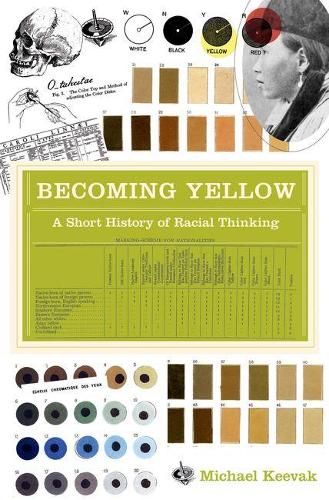
Becoming Yellow: A Short History of Racial Thinking
(Hardback)
Publishing Details
Becoming Yellow: A Short History of Racial Thinking
By (Author) Michael Keevak
Princeton University Press
Princeton University Press
18th July 2011
United States
Classifications
Tertiary Education
Non Fiction
Social and cultural history
History of science
305.8009182109033
Physical Properties
Hardback
240
Width 152mm, Height 235mm
510g
Description
In their earliest encounters with Asia, Europeans almost uniformly characterized the people of China and Japan as white. This was a means of describing their wealth and sophistication, their willingness to trade with the West, and their presumed capacity to become Christianized. But by the end of the seventeenth century the category of whiteness was reserved for Europeans only. When and how did Asians become "yellow" in the Western imagination Looking at the history of racial thinking, Becoming Yellow explores the notion of yellowness and shows that this label originated not in early travel texts or objective descriptions, but in the eighteenth- and nineteenth-century scientific discourses on race. From the walls of an ancient Egyptian tomb, which depicted people of varying skin tones including yellow, to the phrase "yellow peril" at the beginning of the twentieth century in Europe and America, Michael Keevak follows the development of perceptions about race and human difference. He indicates that the conceptual relationship between East Asians and yellow skin did not begin in Chinese culture or Western readings of East Asian cultural symbols, but in anthropological and medical records that described variations in skin color. Eighteenth-century taxonomers such as Carl Linnaeus, as well as Victorian scientists and early anthropologists, assigned colors to all racial groups, and once East Asians were lumped with members of the Mongolian race, they began to be considered yellow. Demonstrating how a racial distinction took root in Europe and traveled internationally, Becoming Yellow weaves together multiple narratives to tell the complex history of a problematic term.
Reviews
"Illuminating ..."--Choice "Michael Keevak has given us a wonderful, even riveting, deep-historical account of how people in Asia (particularly East Asia) came to be seen as yellow... [T]he book is a welcome and important addition to the growing literature on 'race' imaginaries, such as whiteness, blackness, and more. Readers will learn a whole lot, as I did, from Keevak's historical account ... of the evolution of Western racism."--Magnus Fiskesjo, Journal of World History "Becoming Yellow is not always an easy read, but Michael Keevak skillfully presents and examines a number of important yet highly contentious issues and terminologies on racial thinking. His book is thus full of sensible quotation marks and--understandably--the author's own qualifications regarding racial designations such as the use of 'surprising'. For those interested in the western history of racial thinking, this is a convincing introduction to the origin, construction and development of a remarkably persistent European stereotype of East Asia."--Tjalling Halbertsma, Asian Studies Review "Becoming Yellow is a fascinating read, partly due to its intriguing subject matter, partly due to the author's treatment of it... Readers, ... will profit much from Keevak's analysis of literary, scientific, and medical discourses. In particular, they will learn invaluable lessons about the mechanics of racial thinking and about how little seemingly scientific 'truths' are based on biological or empirical facts."--Ralf Hertel, Anglistik
Author Bio
Michael Keevak is a professor in the Department of Foreign Languages at National Taiwan University. His books include "Sexual Shakespeare", "The Pretended Asian", and "The Story of a Stele".
